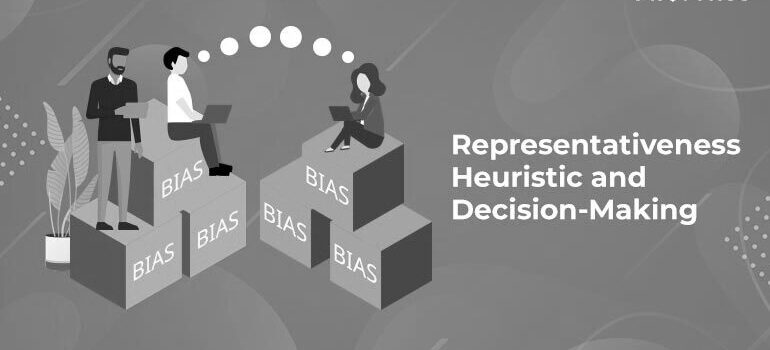Introduction
In the intricate realm of decision-making, our minds often rely on mental shortcuts to simplify complex tasks. One such cognitive shortcut is the Representativeness Heuristic, which guides our judgments and decisions based on how closely an event or person resembles our mental prototype or stereotype. In this blog post, we will explore the Representativeness Heuristic, its relevance in decision-making processes, and its strong foothold in human psychology. We will delve into its prevalence in our day-to-day lives, highlighting its impact on personal life decisions, business scenarios, and public policy-making. By understanding the biases inherent in the Representativeness Heuristic, we can develop strategies to mitigate its influence and make more rational decisions.
Understanding the Representativeness Heuristic
The Representativeness Heuristic is a mental shortcut that involves making judgments and decisions based on the similarity of an event or person to our preconceived notions or prototypes. Instead of objectively evaluating statistical probabilities or considering relevant base rates, we tend to rely on the perceived representativeness of an individual or event. This heuristic allows us to make quick judgments, but it can also lead to biases and errors in decision-making.
Relevance in Decision-Making
The Representativeness Heuristic significantly influences decision-making processes, often leading individuals or groups to make irrational choices contrary to their best interests. By overemphasizing surface-level similarities and neglecting crucial statistical information, we may make biased judgments that hinder our ability to objectively assess risks, probabilities, and outcomes. Understanding the prevalence and impact of this heuristic is essential for making more informed decisions.
Examples of the Representativeness Heuristic
- Personal Life Decisions: Consider an individual who has experienced a series of unfortunate events in their life. Due to the representativeness heuristic, they may start to believe that they are inherently unlucky and make decisions based on this perception. For example, they may avoid taking risks or pursuing new opportunities, assuming that negative outcomes are inevitable.
- Business Scenarios: In the business world, the Representativeness Heuristic can influence investment decisions. If a company’s recent success mirrors that of a previously successful company, investors may make biased judgments and invest without thoroughly considering the unique circumstances and underlying factors. This reliance on representativeness can lead to poor investment choices.
- Public Policy-Making: The Representativeness Heuristic can impact public policy decisions. If policymakers associate specific demographics with negative stereotypes, they may create policies based on those assumptions, neglecting the diverse needs and circumstances of the population. This can perpetuate social biases and hinder the implementation of fair and effective policies.
Mental Biases and Underpinnings
The Representativeness Heuristic is intertwined with various mental biases. The availability heuristic leads us to judge the likelihood of an event based on how easily we can recall or imagine similar events. Confirmation bias reinforces the Representativeness Heuristic by selectively seeking information that confirms our existing stereotypes or prototypes, further distorting our judgments. Additionally, the illusion of control bias can amplify the Representativeness Heuristic by leading us to believe that we have more control over outcomes than we actually do.
Identifying and Avoiding the Representativeness Heuristic
To mitigate the influence of the Representativeness Heuristic, it is crucial to develop awareness and apply critical thinking in decision-making. Here are some practical strategies to identify and avoid this bias:
- Seek Diverse Information: Actively seek out diverse perspectives, data, and information that challenge or go beyond your initial stereotypes or prototypes. This broadens your understanding and helps you make more nuanced judgments.
- Consider Base Rates: Pay attention to relevant base rates and statistical probabilities rather than solely relying on representativeness. Understanding the prevalence of an event in a given population can provide a more accurate assessment of its likelihood.
- Encourage Critical Reflection: Regularly reflect on your own judgments and decisions. Ask yourself if you are relying heavily on representativeness and consider alternative explanations or factors that may be influencing your choices.
- Engage in Collaborative Decision-Making: Involve others in the decision-making process to gain diverse perspectives and challenge biases. By collaborating with a group, you can collectively mitigate the influence of the Representativeness Heuristic.
Conclusion
The Representativeness Heuristic is a pervasive cognitive bias that shapes our decision-making processes. By succumbing to this bias, we may make judgments and decisions that are biased, overlooking statistical probabilities and relevant information. Recognizing the impact of the Representativeness Heuristic and actively working to mitigate its influence can lead to more objective decision-making and better outcomes. Awareness and critical thinking are vital tools to navigate this mental trap and make more informed choices.
